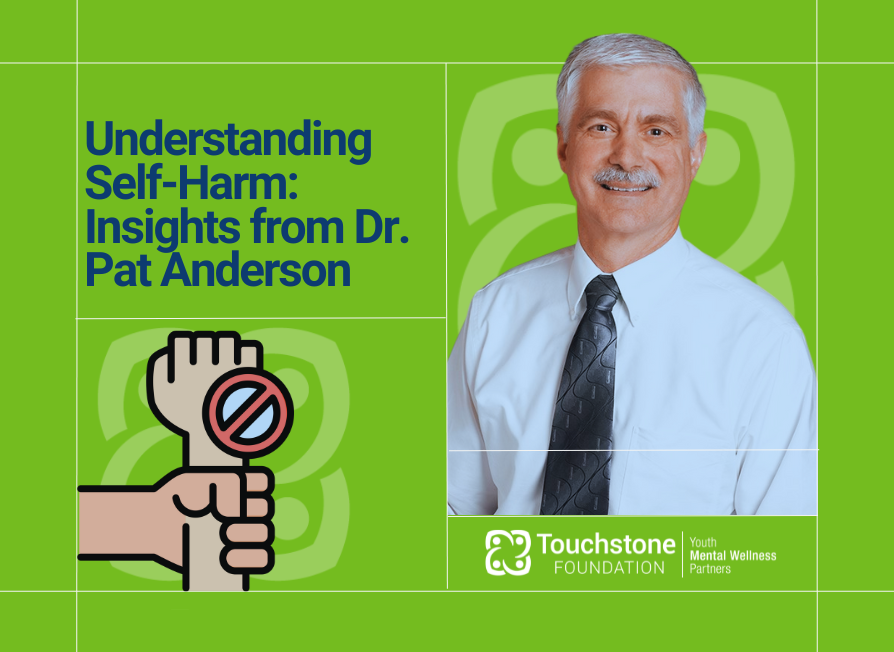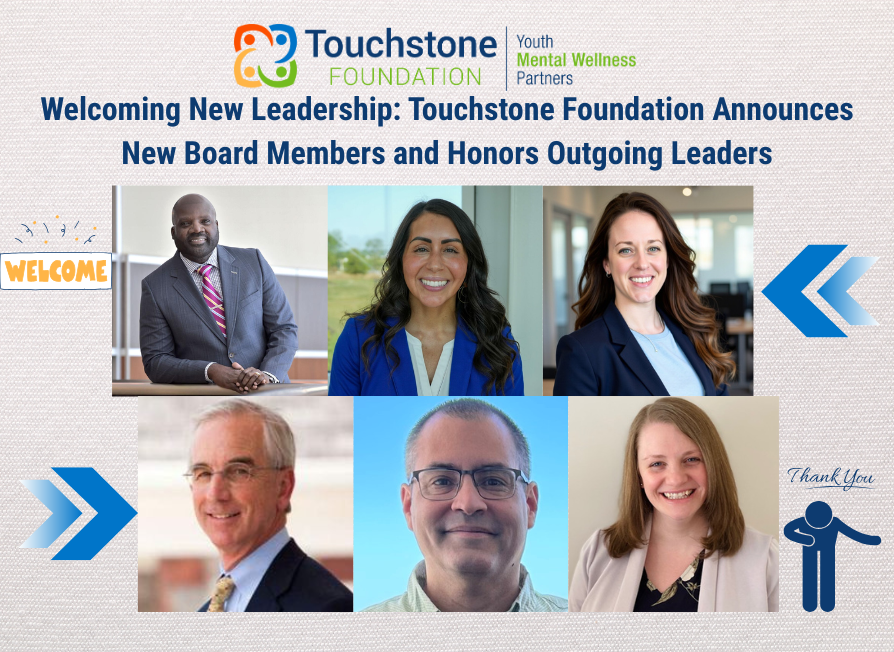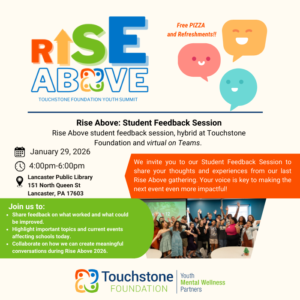
Understanding Self-Harm: Insights from Dr. Pat Anderson
⚠️ Content Warning: Self Harm⚠️
Self-harm is a complex and often misunderstood behavior, affecting individuals across various ages and backgrounds. To shed light on this issue, we spoke with Pat Anderson D.O., a retired family physician and dedicated board member of the Touchstone Foundation. Through his work with our Talent Pipeline Committee, Dr. Anderson continues to advocate for mental health awareness and accessibility in our community.
What Is Self-Harm?
Self-harm refers to the intentional act of causing physical pain to oneself, typically as a way to manage overwhelming emotions. While it is not always linked to suicidal intent, self-harm can increase the risk of suicide over time.
Though commonly associated with cutting, self-harm takes many forms, including burning, hitting, skin-picking, hair-pulling, or using sharp objects to pierce the skin. It often begins in adolescence but can persist into adulthood.
Although it was once believed that self-harm was more common among females, recent research indicates that it occurs at similar rates across all genders. The discrepancy was likely due to underreporting, particularly among males.
Common Misconceptions About Self-Harm
Misunderstandings about self-harm often prevent individuals from receiving the help they need. Dr. Anderson highlights three common misconceptions:
Misconception 1: “Self-harm is a mental illness”.
Reality: Self-harm is not a disorder itself but is often linked to mental health conditions like anxiety, depression, and bipolar disorder.
Misconception 2: “Self-harm is a suicide attempt”.
Reality: Although self-harm increases suicide risk, it is usually a coping mechanism rather than a direct attempt to end one’s life.
Misconception 3: “People self-harm for attention”.
Reality: Many individuals go to great lengths to hide their injuries due to shame or fear of judgment.
Why Do People Self-Harm?
Self-harm is often a response to deep emotional pain. Many individuals struggle to regulate their emotions and turn to self-inflicted harm as a way to release feelings of loneliness, guilt, or panic. Others may use it to cope with past trauma, low self-esteem, personal struggles, identity challenges, or societal factors such as homelessness or running away.
Long-Term Effects of Self-Harm
While self-harm may bring temporary relief, it carries serious long-term consequences. Physically, repeated self-injury can lead to scarring, infections, and even nerve damage. But the impact goes beyond the surface.
Over time, self-harm can escalate, increasing the risk of suicidal thoughts or attempts. Additionally, individuals who self-harm are more likely to engage in other high-risk behaviors, such as substance abuse, disordered eating, or reckless activities. It’s not uncommon for those who self-harm to turn to alcohol or drugs as additional coping mechanisms, which can further impact mental health.
How to Support Someone Who Self-Harms
If you suspect someone is engaging in self-harm, Dr. Anderson recommends the following steps:
· Recognize the signs – Consistent unexplained cuts, bruises, or withdrawal from social interactions
· Encourage open conversations – communication is the key. Offer empathy rather than judgment.
· Refer to a mental health professional – school counselors, therapists, and primary care providers can help
· Address underlying mental health issues – therapy and, if necessary, medication can be effective treatments
· Reduce immediate risks – removing harmful objects from the individual’s environment may help prevent further harm
Seeking Professional Help: The Referral Process
Self-harm is best addressed through professional intervention. Some options include:
· Primary care physicians (PCPs) – often the first point of contact for mental health concerns
· Counseling & therapy – licensed social workers, psychologists, and psychiatrists provide specialized care
· Medication – for some individuals, medication may be helpful, but treatment should always be personalized
Reducing Stigma and Building a Supportive Community
Healing from self-harm isn’t just about professional treatment—it’s also about creating an environment where individuals feel supported and understood. Family members and friends play a crucial role by offering emotional support, avoiding shame or punishment, and encouraging healthy coping mechanisms. Small actions, like checking in regularly or simply being present, can make a world of difference.
At a broader level, communities can help by fostering open discussions around mental health. Schools, social groups, and organizations like Touchstone Foundation are working to break the stigma surrounding self-harm and provide accessible mental health resources. The more we talk about mental health openly, the easier it becomes for those who are struggling to ask for help.
Final Thoughts
Understanding self-harm is not just about recognizing the behavior, but it’s about seeing the person behind it. Dr. Anderson reminds us that self-harm is often a cry for help, not a sign of weakness. With the right support, healing is possible.
No one should have to face these struggles alone. By offering compassion, raising awareness, and ensuring that mental health care is accessible, we can create a world where individuals feel empowered to seek help. Recovery is a journey, but with the right support, every step forward is a step toward healing.





